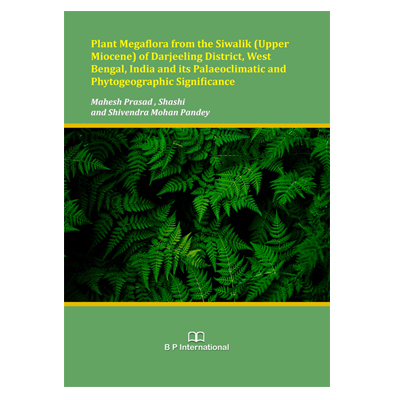The theme of the present research work is based on the study of past vegetation involving aspects of both Botany and Geology. It applies in the understanding of floristics. palaeoclimates, palaeoecology, phytogeography and stratigraphy. The palaeobotanist investigates plant fossils from the distant to the immediate past to understand their form and function and buildup floristic patterns through nearly 3500 million years of life records. Palaeobotanical investigations also help in charting the history of modem vegetation and the origins and development of agriculture and plant utilization.
The flora of Siwalik Group of India has been subjected to numerous changes. Many genera which are recorded in India during Mio-Pliocene either migrated or faced extinction. Evolution of the Siwalik floras in the northern region has largely been influenced by the Himalayan orogeny. Because, the Middle-Miocene orogeny of the Himalaya led to the proliferation of several gymnospermic groups and appearance of several subtropical angiospermic taxa like, Pinus, Abies and Cedrus etc. The problems associated with the Siwalik (Mio-Pliocene) floras are of regionalism, endemism and migration/ extinction in response to physical and climatic factors which need to be worked out in detail to unravel the history of the modern flora of India.
The present work will enhance its academic and applied utility of palaeobotanical study for those engaged in evolutionary botany, forestry, environmental interpretation, climatology and exploration of fossil fuels. Based on the authentic and refined plaeobotanical knowledge/data so far recovered from the study areas, the reconstruction of vegetation scenarios of Himalayan foot hills through Siwalik (Middle Siwalik) time has been done, and also discussed on problems related to plant diversity, endemism, and migratory pathways of mainly phytogeograpraphically important taxa.





